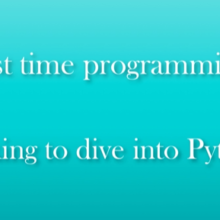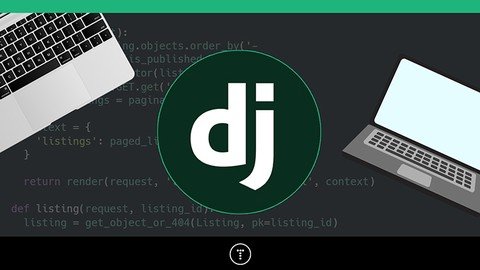In Python, list and tuple are a class of data structures that can store one or more objects or values. A list is used to store multiple items in one variable and…
Flask vs. Django: Which Web Framework is Best?

Web frameworks provide a standard set of tools that enable developers to build things fast. here we will see the comparison of Flask vs. Django
Flask and Django are by far the two most popular open-source Python web frameworks.
Both are excellent. But knowing which one to choose for your project — or deciding whether to incorporate both — can be a daunting task.
In this article, we’ll explain the differences between Flask vs. Django to help you choose the right one for the job.
But first, what is the purpose of a web framework?
We cover this at length in What is Django?
To recap, web frameworks provide the basic functionality needed to get a website up and running. They handle things like HTTP requests, returning HTML documents, and responding to requests. (Things that go on behind the scenes every time a user visits a website.)
Web frameworks also help to organize code by providing structure.
For instance, creating a website involves mapping URLs to code. Frameworks provide a predetermined structure for doing this.
Each framework provides varying degrees of features and decision-making. Some are more opinionated, like Django, which means many decisions are not up to you, saving you time and decision fatigue.
Flask, on the other hand, is a minimalist web framework. It demands more decision-making from you but offers you flexibility and control over your application development in return.
Let’s see how is Flask vs. Django
—————————————————————————————————————–
Django { Flask vs.Django }
Django is a web framework for Python that comes fully-loaded. It provides everything you need to get started.
Design decisions — like where to put code to handle specific tasks and how to configure your app — are made by Django. This saves a lot of time because you don’t need to install this functionality yourself.
Here are some features Django provides the moment you install it:
- Built-in ORM (object-relational mapper) for mapping objects to your database
- Migrations for managing changes to your database
- Admin interface for managing your application’s data through a web interface
- Form validation for checking users’ input is valid
- Settings configurations for customizing your application once it deploys
- A development server for testing your code as you develop it
- A template engine for generating HTML pages from code
- Sessions for storing data about users as they navigate through your website
- Authentication services allowing users to create an account and log into the account
- Static file management for serving images, CSS, and JavaScript
- Command line interface (CLI) that administrators can use to perform maintenance tasks such as exporting and importing data and database cleanup
- A unit testing framework for writing tests
On top of this, you can install Django REST Framework to boost the full-featured functionality already provided by Django. This empowers you to create RESTful APIs for your simple or complex web app.
Top courses in Django
But all these features come at a cost.
With Django, all the features listed above are in your project, regardless of whether you want them or not. This is handy for complex web apps. But for simple tasks, it may mean adding far more dead weight than necessary. This code will increase the size of your application, loading times, and complexity.
If you’re building a very small website — like a single webpage for your professional bio — Django may be overkill. It’s unlikely you will use 99% of the features it comes with.
So what then?
Enter Flask.
Flask {Flask vs. Django}
Flask vs. Django
Flask is a micro-framework. It has no built-in authentication system, admin site, or fancy Object-Relational Mapper. It maps URLs to code, handles requests, and returns HTML templates as responses, and that’s about it.
With Flask, you get to make the decisions.
Need database integration? Build it yourself. Or choose one of the external libraries that provide this functionality, like SQLAlchemy.
With Flask, if you want to do anything more than handle HTTP requests and render web pages, you have two options:
- Find a package that does what you need.
- Build the functionality yourself.
This minimalist approach applies to how you structure your code, as well.
Unlike Django, Flask doesn’t have strong opinions on where you should put your code. You are free to organize your application as you (or your team) see fit.
This is great if you have an idea of how you want to structure your project. Or if your project is so small, there won’t be much code to structure anyway.
But in any other situation, these decisions may be very time-consuming. And your time is better spent writing code to create the unique value your project intends to offer.
Flask vs. Django: Which framework is best?
Ultimately, it depends. Let’s look at the different types of applications to determine which framework would be best for each situation.
So what should you learn? Flask vs. Django
Both Flask and Django are excellent frameworks, and being proficient in both will benefit your career as a Python developer.
But if you’re thinking of learning one with a specific project in mind, take a look at the table below to help guide you in the right direction:
| Good documentation | Yes | Yes |
| Handle HTTP Requests | Yes | Yes |
| HTML Templates | Yes | Yes |
| Built-in auth system | No* | Yes |
| Built-in database integration | No* | Yes |
| Built-in admin site | No* | Yes |
| Built-in CLI tools | No* | Yes |
| Built-in form validation | No* | Yes |
| Lightweight | Yes | No |
| Great for microservices | Yes | No |
| Good for rapid development of popular website features (database integration, admin site, auth) | No | Yes |
* Possible to do, but you need to build it yourself or find (and learn) an external library.
In summary, if you want to make use of the built-in Django features, go with Django. If you don’t think you will use these features, and/or you prefer to choose your own packages or build functionality from scratch, go with Flask.
More Top courses suggestions
Django students also learn
Agile project management Artificial Intelligence aws blockchain cloud computing coding interview coding interviews Collaboration Coursera css cybersecurity cyber threats data analysis data breaches data science data visualization devops django docker excel flask Grafana html It Certification java javascript ketan kk Kubernetes machine learning machine learning engineer Network & Security nodejs online courses online learning Operating Systems Other It & Software pen testing Project Management python Software Engineering Terraform Udemy courses VLAN web development















